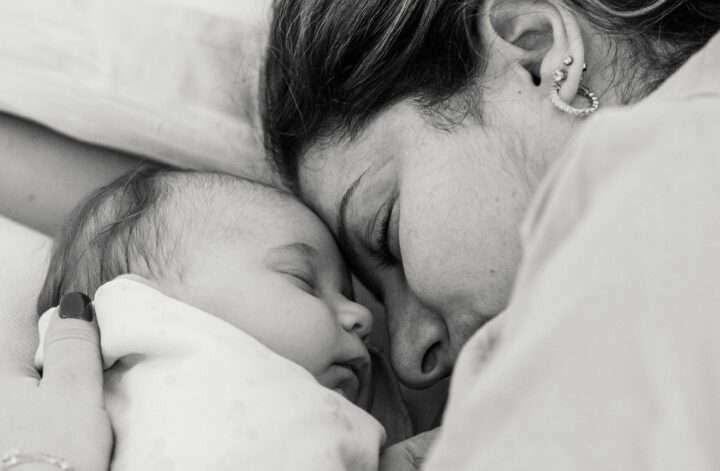Sleep training is a hot topic among new parents, and for good reason. Teaching your baby to sleep through the night can be life-changing for the entire family. However, the process can seem daunting with so many methods and opinions on the best way to do it. This ultimate guide will provide you with the knowledge and tools you need to navigate sleep training, helping your baby develop healthy sleep habits and ensuring everyone gets a good night’s rest.
Understanding Sleep Training
What is Sleep Training?
Sleep training is the process of teaching your baby to fall asleep and stay asleep through the night. This often involves helping your baby learn to self-soothe and fall back to sleep independently if they wake up during the night. The ultimate goal is to establish a consistent sleep routine that benefits both the baby and the parents.
When to Start Sleep Training
Ideal Age for Sleep Training
Most pediatricians recommend starting sleep training when your baby is between 4 to 6 months old. By this age, babies are typically developmentally ready to sleep for longer stretches and may not need nighttime feedings. However, it’s important to consider your baby’s unique needs and consult with your pediatrician before beginning any sleep training method.
Popular Sleep Training Methods
There are several sleep training methods, each with its own approach. Here are some of the most popular ones:
1. Cry It Out (CIO) or Extinction Method
This method involves putting your baby to bed awake and allowing them to cry until they fall asleep without any intervention. The idea is that the baby will learn to self-soothe and eventually fall asleep on their own. While this method can be effective, it can also be emotionally challenging for parents.
2. Ferber Method (Graduated Extinction)
The Ferber Method involves letting your baby cry for predetermined intervals before offering comfort. The intervals gradually increase each night. For example, you might start by letting your baby cry for 3 minutes before comforting them, then increase to 5 minutes, and so on. This method aims to teach self-soothing while still providing intermittent reassurance.
3. Chair Method
In the Chair Method, a parent sits in a chair next to the baby’s crib and gradually moves the chair farther away each night until they are no longer in the room. This method provides comfort and reassurance while slowly teaching the baby to fall asleep independently.
4. Pick Up/Put Down Method
With this method, parents pick up the baby to comfort them whenever they cry but put them back in the crib before they fall asleep. This process is repeated until the baby falls asleep on their own. It requires patience and consistency but can be less distressing for both baby and the parents.
5. No Tears Method
The No Tears Method involves gentle techniques to help your baby fall asleep without crying. This might include rocking, nursing, or using a pacifier. The goal is to gradually reduce these sleep associations until the baby can fall asleep independently.
Preparing for Sleep Training
Establish a Bedtime Routine
Creating a consistent bedtime routine signals to your baby that it’s time to sleep. This routine can include activities like bathing, reading a book, or singing a lullaby. Aim to start the routine at the same time each night to establish a regular sleep schedule.
Create a Sleep-Friendly Environment
Ensure your baby’s sleep environment is conducive to rest. This includes a comfortable crib, a dark room, and a white noise machine to drown out background noise. Keep the room at a comfortable temperature and dress your baby in appropriate sleepwear.
Consistency is Key
Whichever method you choose, consistency is crucial. Babies thrive on routine, and sticking to your chosen sleep training method will help your baby understand what to expect and adjust more quickly.
Tips for Successful Sleep Training
1. Be Patient
Sleep training can take time, and every baby is different. It’s important to be patient and give your baby time to adjust to the new routine. Progress may be slow at first, but consistency will pay off in the long run.
2. Monitor Your Baby’s Cues
Pay attention to your baby’s sleep cues, such as rubbing their eyes, yawning, or becoming fussy. Putting your baby to bed when they show signs of tiredness can make it easier for them to fall asleep.
3. Avoid Sleep Associations
Sleep associations are conditions your baby believes they need to fall asleep, like rocking or nursing. Gradually weaning your baby off these associations will help them learn to fall asleep independently.
4. Handle Setbacks Gracefully
Sleep training doesn’t always go smoothly. Teething, illness, or changes in routine can disrupt your baby’s sleep. Be flexible and understanding, and be prepared to adapt your approach as needed.
5. Involve Your Partner
Sleep training can be exhausting, so involve your partner in the process. Sharing responsibilities can provide much-needed support and ensure that both parents are on the same page.
Common Sleep Training Challenges
1. Crying
Crying is a natural part of sleep training, especially with methods like CIO or Ferber. It can be difficult for parents to hear their baby cry, but remember that crying is a way for babies to communicate and self-soothe.
2. Night Wakings
It’s normal for babies to wake up during the night, especially in the early stages of sleep training. Use your chosen method to help your baby fall back asleep without creating new sleep associations.
3. Regression
Sleep regressions are common at various developmental stages. If your baby starts waking up more frequently or has trouble falling asleep, stay consistent with your sleep training approach and provide extra comfort as needed.
Conclusion
Sleep training is a journey that requires patience, consistency, and a bit of trial and error. By choosing a method that aligns with your parenting style and your baby’s needs, you can help your baby develop healthy sleep habits and enjoy the benefits of a well-rested household. Remember, there is no one-size-fits-all solution, and it’s important to be flexible and responsive to your baby’s cues. With time and perseverance, sleep training can lead to more restful nights for both your baby and your family.




